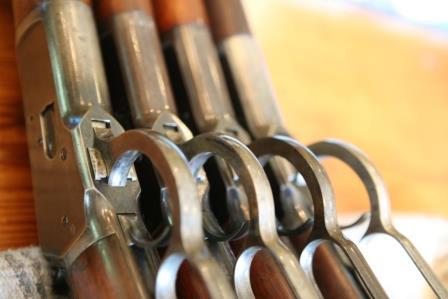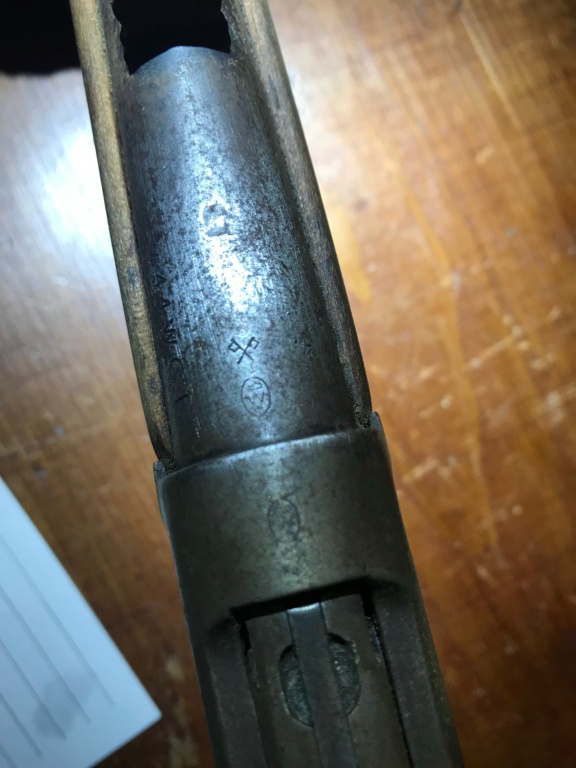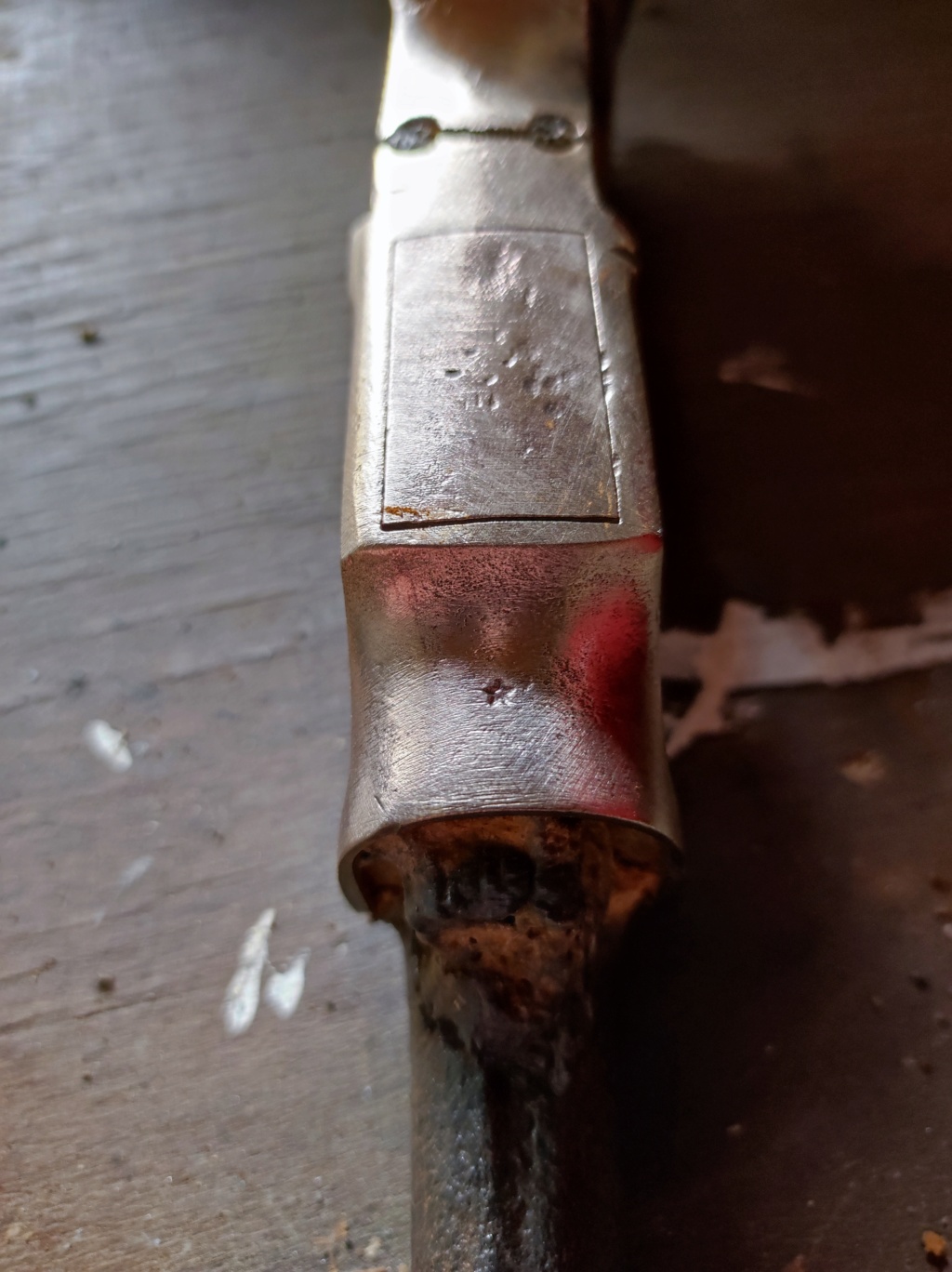November 20, 2019
 Offline
OfflineHello,
here are two rifles (remnant in the second case) with a marking I can’t identify. Have you ever seen either?
On a model 1892 in 44 WCF
on the remnant of a Winchester 1866 (dug out from a field on the atlantic coast of France. Could be from a 1866 Musket from the massive weapons import in 1871)
Many thanks in advance.
Gilles
March 20, 2009
 Offline
OfflineBonjour Gilles,
The Model 1892 certainly appears to have the DCP stamp on it. Is the gun a saddle ring carbine configuration? What is the serial number of the rifle? You may be interested in the article written by Rick Hill (attached below) from the WACA magazine which covers these marked rifles.
Michael

Model 1892 / Model 61 Collector, Research, Valuation
February 4, 2008
 Offline
OfflineThe broad arrow is an ownership mark. An inspection/acceptance mark is quite different and will generaly, in abbreviated form, show where the inspection took place, which factory or establishment in other words and the inspectors identification number.
The crossed pennants on the Model 1892 is a British military proof mark only. It has nothing to do with the Dominion of Canada, DCP marking, which relates to the 20,000 Model 1892 SRC’s the Admiralty purchased.
I have 3 other Model 1892 carbines recorded in my data base with this marking. It is not known for sure but it may be that your carbine is one of the 1,000 of same that Lord Nunburnholme from the Wilson Shipping Company family, purchased and gifted to the nation in 1915. This purchase is covered in a post WW1 book published by the Admiralty in 1920, which also covers other miscellaneous rifles that were purchased at the same time.
Unfortunately, this is only a theory as no hard evidence has shown up regarding this purchase. I could find nothing in the Macracen Library when I visited and have found nothing in the National Archives in London. I did make contact with the current Lord Nunburnholme but he had no knowledge of this purchase.
I have 97 DCP marked Model 1892 carbines in my survey and with your carbine 4 known examples of a crossed pennant BRITISH proof mark, which is close to the proportions of 1,000 and 20,000.
If you post the full serial number I am sure Bert will not mind letting you know the date your carbine passed through the polishing room and had its serial number applied.
Regards
Alan
November 20, 2019
 Offline
OfflineThank you very much for these clarifications.
The carbine is not mine, and is located in Canada, but i’m “asking for a friend” 
I will try to get the requested info (serial and exact model, but I bet it’s a 44 WCF SRC 1892).
I was pretty sure the stamp was not a DCP one, as it was missing the letters and the crown without any sign of them being erased (and the stamp seems a wee bit smaller than current DCP marks.
Now, has anybody any clue about the star on the 1866 receiver?
November 20, 2019
 Offline
OfflineHello rwsem,
where did you find this Paris Proof house stamp? As far as I was aware, this proof house only proofed guns made in France, imported guns were stamped at Saint Etienne (and military contract guns, which this one “might” be an example of, were not proofed anyway)
Our best guess so far is the Spanish stamp for rimfire guns, which could be a possibility as Spain imported a number of 1866 model, and it could have made its way to the South West of France and get buried there…
January 7, 2017
 Offline
Offlinefreebird1968 said
Hello rwsem,where did you find this Paris Proof house stamp? As far as I was aware, this proof house only proofed guns made in France, imported guns were stamped at Saint Etienne (and military contract guns, which this one “might” be an example of, were not proofed anyway)
Our best guess so far is the Spanish stamp for rimfire guns, which could be a possibility as Spain imported a number of 1866 model, and it could have made its way to the South West of France and get buried there…
I was simply looking at the proof house guide from the NRA Museum.
Technically, the glass is always full; half liquid, half air....
WACA #10293
February 4, 2008
 Offline
OfflineSteve004
Yes, as you surmise, the Model 1892 in the first post with crossed pennants only is NOT a DCP carbine, it is thought to be one of the 1,000 purchased by Lord Numbeholme in 1915. I only have 4 of these carbines recorded in my data base so far, after years of looking.
Regards
Alan
1 Guest(s)


 Log In
Log In







 ), why would there be a military inspection marki on a 1892, other than the DCP one, (which I don’t believe this is) ?
), why would there be a military inspection marki on a 1892, other than the DCP one, (which I don’t believe this is) ?
 Online
Online


